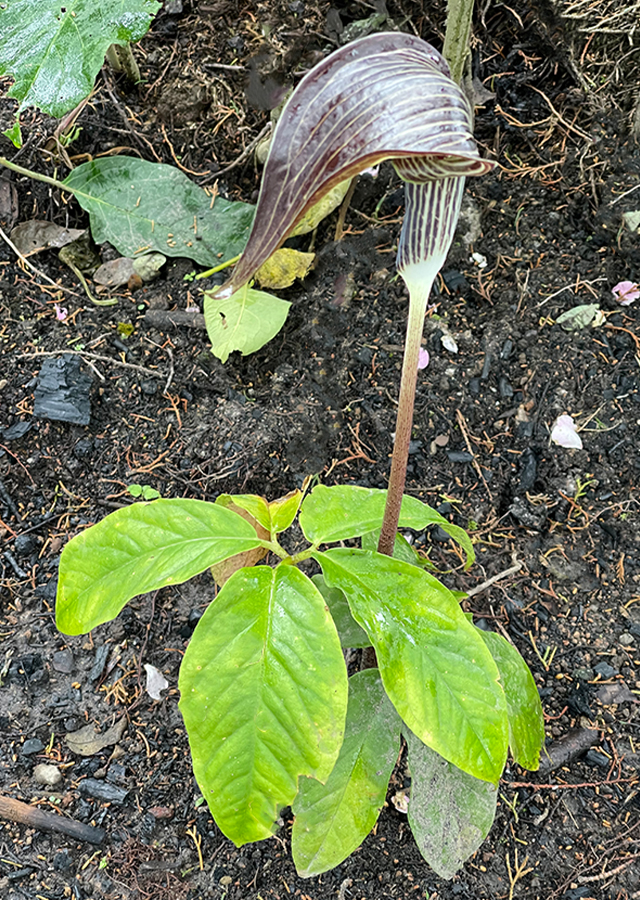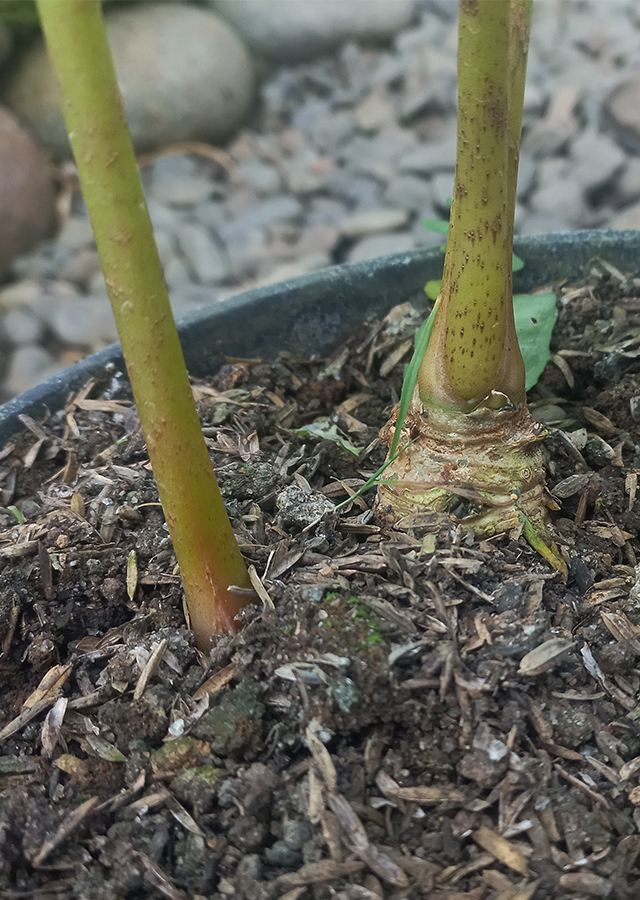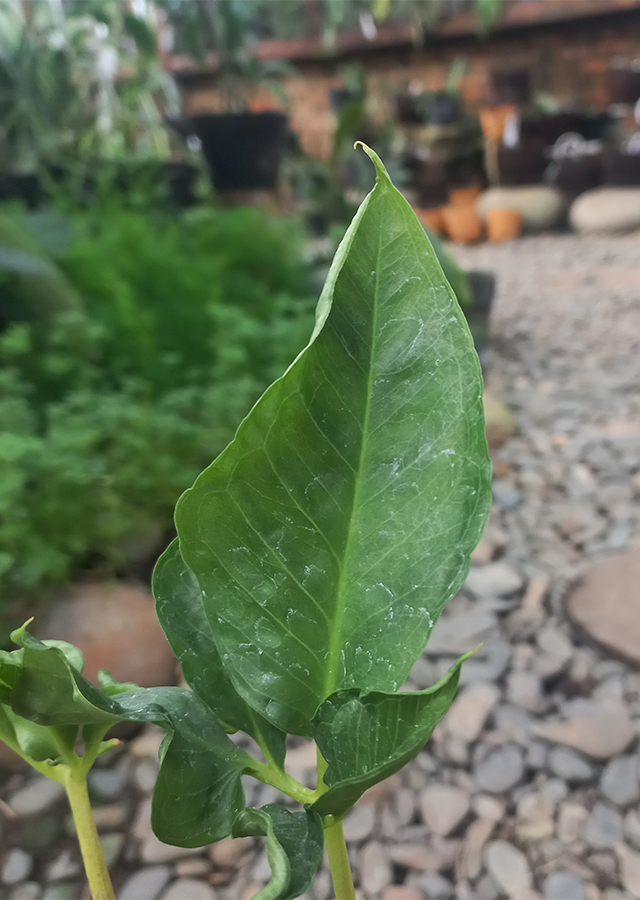Cobra Lily/Tian Nan Xing
Arisaema amurense Maxim.
Araceae
Location in our garden
Principal



Synonym
Arisaema amurense f. purpureum (Nakai) Kitag.
Arisaema komarovii Tzvelev
Arisaema robustum (Engl.) Nakai
Habitus
Herbaceous. A herbaceous perennial plant growing from a tuber
Part Used
Roots
Tuber
Growing Requirements
Full Sunshine
Need Shade
Habitat
Riverbanks
Forest
Mountains
Overview
Arisaema amurense is one of the plants from the Araceae family which is widely distributed in Korea, Japan, and North China. This species is commonly harvested from the wild and has been popularly used in traditional Chinese medicine for thousands of years and is prized primarily for its beneficial effects on the chest. In addition, A. amurense extract is known to have function to inhibit skin pigmentation. The plant is also occasionally used as a food.
Vernacular Names
Information not found. Need further search.
Agroecology
Arisaema amurense can generally be found growing in forests, wet and shady areas in mountains, and river banks. In China, generally can also be found in deciduous forests, mixed forests, under forests and on the banks of rivers, at an altitude of 50 - 200 m above sea level. This species prefers loam or peat soils, and can tolerate sunny positions if the soil is moist but not waterlogged, in a slightly exposed position.
Morphology
- Roots - fibrous roots spread from the top of the tuber.
- Tubers - pressed or concave, globose, containing 2 -3 small tubers.
- Leaves - leaf blade 3-foliolate or pedately 5-foliolate, leaflet sometimes covered with fine whitish markings, oval to narrowly oblong, leaf base cuneate, leaf margin flat or serrated, sometimes denticle, the tip of the leaf is sharp (acute). Middle leaflet with petiole 5 - 25 mm, inverted ovate (obovate). Lateral leaflets oblong-lanceolate, petiole about 15 - 30 cm long. Sessile outer leaflet, 9 - 15 cm, oblique, pointed at the base on the inside, auriculate or round on the outside.
- Flowers - The peduncle is shorter than the petiole. Spathe funnel-shaped tube to cylinder, pale green, purple edge, blade erect, greenish, usually with pale purplish stripes, throat slashed obliquely, apex tapering (acuminate). Spadix unisexual, with additional cylindrical terminals, 4 ovules, round stigma, 2 or 3 anthers.
- Fruits - red berries, narrow conical.
- Seeds - red, ovoid, smooth.
Cultivation
- Propagated by seeds and division of tubers.
- Seeds are best sown as soon as they ripen in the shade. Germination usually occurs in 1 - 6 months at 15 °C.
Chemical Constituents
Saponins, diacylglycerylgalactosides.
Traditional Medicinal Uses
- Act as sedative.
- Treating cough with phlegm, headaches, tumors, cervical cancer, inflammation of the lymphatic glands in the groin, dry pleurisy, epilepsy, tetanus and complaints involving muscle spasms.
- Treat boils and other skin complaints.
- It is anodyne, antibacterial, antifungal, antiphlogistic, antirheumatic, anticancer, antispasmodic (relieves, prevents, or reduces the risk of muscle spasms and relaxes muscles), antitumor, and expectorant.
Part Used
Reference Sources
- Royal Botanic Gardens. Plants of the World Online: Arisaema amurense Maxim.. https://powo.science.kew.org/taxon/urn:lsid:ipni.org:names:85565-1. 15-05-22.
- Temperate Plants Database, Ken Fern. 2021. Arisaema amurense. http://temperate.theferns.info/plant/Arisaema+amurense. 15-05-22.
- Natural Products Research Institute Seoul National University. 1998. Medicinal Plants in the Republic of Korea. Information on 150 commonly used medicinal plants. WHO Regional Publications Western Pacific Series No. 21.
